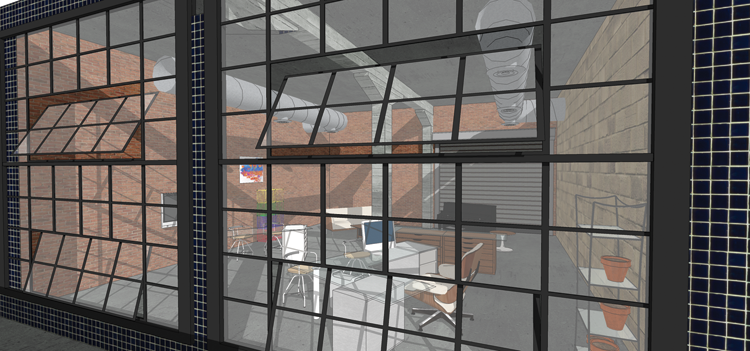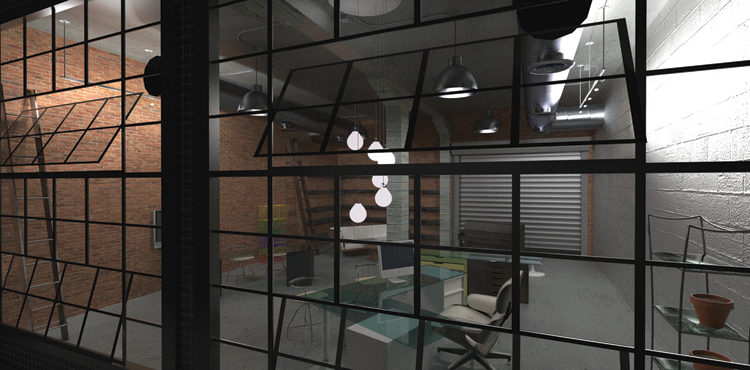Chapter 11
An Overview of Modeling Detail
The physical world is filled with details, colors, objects, and materials of all different sizes. As it constructs our sense of reality, the human mind assimilates these details both consciously and unconsciously. Three-dimensional models can, with time and work, have an almost equal level of intricate detail (Fig. 11.1, Fig. 11.2, Fig. 11.3, Fig. 11.4). By adding detail to a model, you can greatly accentuate your renderings and promote realism.
Fig. 11.1 through Fig. 11.4 are modeled by interior designer Kala Letts (additional detail and rendering by Daniel Tal). The model was the winning entry in the Easter Seals SketchUp-a-Space competition in 2012. Kala’s intent was to show how to create an accessible design office and space useful for people with disabilities. The striking aspect of these models is the thoughtful level of detail.
Fig. 11.1: The SketchUp model view of interior model without component detailing (model by Kala Letts, rendering by Daniel Tal)

The chapter provides an overview of the methods used to achieve such detail for both interior and exterior spaces.
Fig. 11.2: Rendered version of SketchUp model (Twilight Render) from Fig. 11.1 (model by Kala Letts, rendering by Daniel Tal)

Fig. 11.3: The same interior model ...
Get Rendering in SketchUp: From Modeling to Presentation for Architecture, Landscape Architecture and Interior Design now with the O’Reilly learning platform.
O’Reilly members experience books, live events, courses curated by job role, and more from O’Reilly and nearly 200 top publishers.

